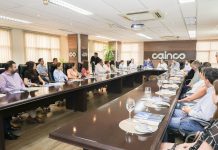Abstract
English has become the default communication language for global software development teams. Communication in English is a key skill in every step of global software development, but global software development companies many times lack a proper management approach for it.
The lack of communication skills in English is one of the most frequent causes of global software development project failures. At Jalasoft, a software development company with offices in Bolivia – South America, we saw the risk associated to this issue increase as the company started growing by hundreds of software engineers. The solution to this situation, was to create a very lean and specialized training program to build the communication skills of non-English speaking software developers. This program now helps them communicate and collaborate in English with their international peers, within an agile workflow context.
This article presents the results of a decade of research, experimentation and consolidation of a specialized English training program. The results introduce the number of trainees, methodology and tools of the program, that was implemented and successful in helping several generations of software developers to build their communication.
Introduction
A growing software industry is showing an increasing trend in the outsourcing of software development, which is deepening the need for teams with adequate communication skills. There are many reasons why these outsourcing teams are growing, including lower development costs and a diverse talent pool. But a diverse and distributed talent pool also brings communication challenges, such as: the lack of English language skills, intercultural misunderstandings, difficulties in adopting work methodologies like agile software development, and consequently negatively impacting project success.
The communication problem in global software development is most visible when teams with English as a foreign language are not able to coordinate and collaborate with other teams. Communication in this context conveys more than information, it is about intercultural understanding, trust and shared ownership. The importance of a bridge language and a basic common shared culture has substantially increased in the last decades in the software industry, due to the growing popularity and importance of global software development and the growing impact software has on society and the daily lives of everyone.
The challenge of communication in English is very real in Latin America, where, according to the Education First – English Proficiency Index 2018, we find the second lowest level of English proficiency in the world [1], with a tendency of not improving, according to this report. The ETS TOEFL exam scores averages published from 2012 to 2017 also show that Latin American nations like Brazil, Chile, Colombia and Bolivia have very similar nationwide test averages across the last 5 years, signaling that this reality is not unique to a specific country in the region but rather faces very similar challenges in most of Latin America.
English proficiency is the largest piece of an effective communication strategy for global software development. However, there are other components that are also critical to achieve an acceptable quality of communication. We can place most of the other elements of communication into two other groups; intercultural communication and agile communication in software development teams, as described in Figure 1 below.
Problems in intercultural communication arise when messages are incorrectly interpreted. In this process of understanding a message, it is the person who receives the message that interprets it using a set of values, beliefs and expectations of behavior. In order for a common understanding to be established, these elements should be similar to those of the person that sent it. If a misunderstanding occurs, people frequently attribute it to the other person involved in the communication. This frequently breaks trust, which is a key element of effective communication.
Below in Figure 2 you can find an example taken from hbr.org of an intercultural communication, between what a native British speaker says, what he means and what a Dutch listener understands from the same words. This is an example that helps us understand that intercultural communication is complex even among speakers with a native or high proficiency in the English language, and that the interpretation of messages may vary.
When working together in agile development teams there are several modes of communication that may be used. In Figure 3 below, Alistair Cockburn, contends that the most effective communication is person-to-person, face-to-face, particularly when enhanced by using a shared modeling medium such as plain old whiteboard (pow) or other simple channels [3]. As the richness in the choice of communication channel falls you lose physical proximity and the cues that it provides; you also lose the ability to use analogic techniques like gestures and other nonverbal expressions.
Communication is more effective when you choose the right mode of communication. Using the channel with the greatest richness of communication maximizes your chance of a successful outcome. However, in global or virtual teams there are frequently fewer options regarding which channel may be used for modeling purposes, thereby adding to the intercultural and linguistic challenges that already exist. This provides a complex environment that increases the probability of misunderstandings or incorrect perceptions.
Enabling People to Start in the Global Software Development Industry
This article presents the results of a decade of research, experimentation and consolidation of a specialized English training program at the Jala Foundation and Jalasoft. The results introduce the components, methodology and tools of the training program. These were implemented and successful in enabling several generations of software developers to grow their communication skills in English, in most cases from almost zero English proficiency. The Jala Foundation has trained more than 1000 junior engineers for the global software industry since 2008, almost all of which work currently from Cochabamba, Bolivia for the global software development industry.
The English placement test is one of the most basic elements of the program. The persons that start the training program are required to take this test in order to provide an initial snapshot of their English proficiency. In 2012 all Jalasoft engineers took the English placement exam, this set the English proficiency baseline. This English placement test, which assesses the proficiency level for each of the four basic English skills, is mapped to the Jalasoft engineering promotion profiles, for junior, staff and senior software engineers. This means that there is an English language proficiency prerequisite in order to achieve a job promotion, for any software engineer working at Jalasoft.
The English placement exam for all Jala Foundation applicants, has historically given an all-time average of around 15%. This average has had a slight decrease in the 10-year period we have used it to assess the training program applicants. The historical all-time exit average for student that successfully finish the training program is between 40-45%. Based on the companywide baseline English placement test average in 2012, validated by years of additional placement tests, the minimum entry baseline of English language proficiency for junior engineers to start working in the global software industry is between 40-45%.
In 2015 a companywide intercultural communication survey was done at Jalasoft, which included more than 150 engineers. The results were used to identify the intercultural communication dimensions where engineers had a noticeable difference with the target customer culture. We then strategically incorporated this information to evolve our training program to reduce these differences. We prioritized an integration strategy based on the acknowledgment of both our largest differences and also our strongest similarities in terms of intercultural communication.
Agile work methodologies have been an important part of the training time at the Jala Foundation since its beginning. All the elements that contribute to improving communication and collaboration are a key part of the students’ everyday work at the Jala Foundation. This training is currently done using both English and Spanish, the immersion level for agile work methodologies is high and the English immersion level is improving.
Communication is greatly limited in global software development teams by the quality of the media channels available. Given that these are usually virtual ones, such as phones, VOIP, IM, email and other less rich media, the communication quality of remote teams is greatly affected: perception becomes important and sometimes issues seemingly arise from one moment to the next. In the last 5 years Jalasoft has heavily invested in improving the communication infrastructure.
Communication with insufficient or unclear information can cause misunderstandings: sometimes masking issues that grow and eventually burst into negative situations, sometimes creating false perceptions of issues that are actually nonexistent. Helping engineers realize the limitations of their frequently used media channels is not a trivial effort; this is true for teams on both side of the phone. This is one of the most challenging training tasks that students undergo at the Jala Foundation, at a basic level.
A different type of challenge, which is also important to point out, has to do with the cultural diversity in Bolivia. Currently, many of the junior engineers which get the training at the Jala Foundation, are the sons and daughters of a generation of rural migrants, with a very different worldview, that moved to the city of Cochabamba from mining or farming areas in the highlands of Bolivia mainly during the 80s and 90s. Many of the rural areas in Bolivia have a rich cultural diversity with very different characteristics to those of the urban zones. For example, a concept as basic as that of time has a very strong poly-chronic worldview in the rural areas, rather than the more mono-chronic conception required to work in a global software development context.
Results and Future Plans
The Jala communication in English training program for global software development was started a decade ago to address a growing risk of communication in English at Jalasoft. The program addressed both the situation which was affecting the Jalasoft engineering services business and evolved to support the engineers that continuously need to grow their communication skills in English. Through our history of work in the global software development industry, we have verified that the communication in English skills are as critical as the technical skills, for each engineer and for the whole team. The Jalasoft success story in the global software industry, has a critical part of its footing on the communication in English skills our engineers have achieved.
Among the early results of the program, is an overall increase in the awareness trainees have of the importance of English as the default language with customers and peers abroad in our industry. People that go through the program quickly grow their awareness of the importance of communication in English and intercultural communication for their daily work. Trainees quickly acquire elements of understanding of the most frequent intercultural communication scenarios within the software industry. At the Jala Foundation their skills are cultivated and experience is built through hands on situations where they learn how to deal with realistic communication challenges
From the more than 1000 students which have been trained since 2008. Currently at Jalasoft we have more than 650 engineers currently working in the global software industry. These engineers have sufficient proficiency to communicate in English, and are continuously learning and improving their communication skills, in response to the permanent evolution of challenges and opportunities.
Jalasoft is the pioneer of global software development in Bolivia. There are many engineers that worked at Jalasoft and then moved to become founders or members of other companies both in the valley of Cochabamba, and elsewhere in Bolivia. Currently, the software industry in Cochabamba has approximately more than 3000 people within the valley, with more than a hundred companies. All these engineers and companies are gradually creating an industry of evermore importance to the economy of the city and the region. All these global software development companies require communication in English, in order to collaborate with their customers and work within international virtual teams.
Currently the software industry in Cochabamba has a growing impact on the economy of the region. If the growth rate of the last decade continues, which has one of the highest digital momentums in the region according to various Digital Evolution Indexes [4], we could eventually have an important impact on the economy and labor market of Bolivia. Jalasoft is building a specific work culture and mindset, that creates value and technology that can benefit the Bolivian society overall. We want to continue to be a success story in the country and become a reference in the Latin American region. The goal of Jalasoft is to create software intellectual property and provide software and digital solutions to the Latin American region.
The Jala Group, to which Jalasoft belongs, plans to continue to invest in education, in order to enable the continuous growth of the software industry in Bolivia and to create software intellectual property. The next step in this investment is taking place at the University level, where Jala plans to make significant investments and apply the communication lessons and methods that have been learned in the past decade. The goal is to enable and give opportunities to Bolivian students from all over Bolivia, and give them the chance to become global software professionals.
[1] Education First, English Proficiency Index – http://www.ef.com/epi/
[2] TOEFL iBT Test and Score Data Summary – www.ets.org/toefl
[3] Alistair Cockburn, Agile Software Development. Addison-Wesley: Clarendon, 2001
[4] Digital Evolution Indexes – https://hbr.org/2017/07/60-countries-digital-competitiveness-indexed – https://sites.tufts.edu/digitalplanet/files/2018/11/DEI-LAC_Executive-Summary_27Nov2018.pdf




























